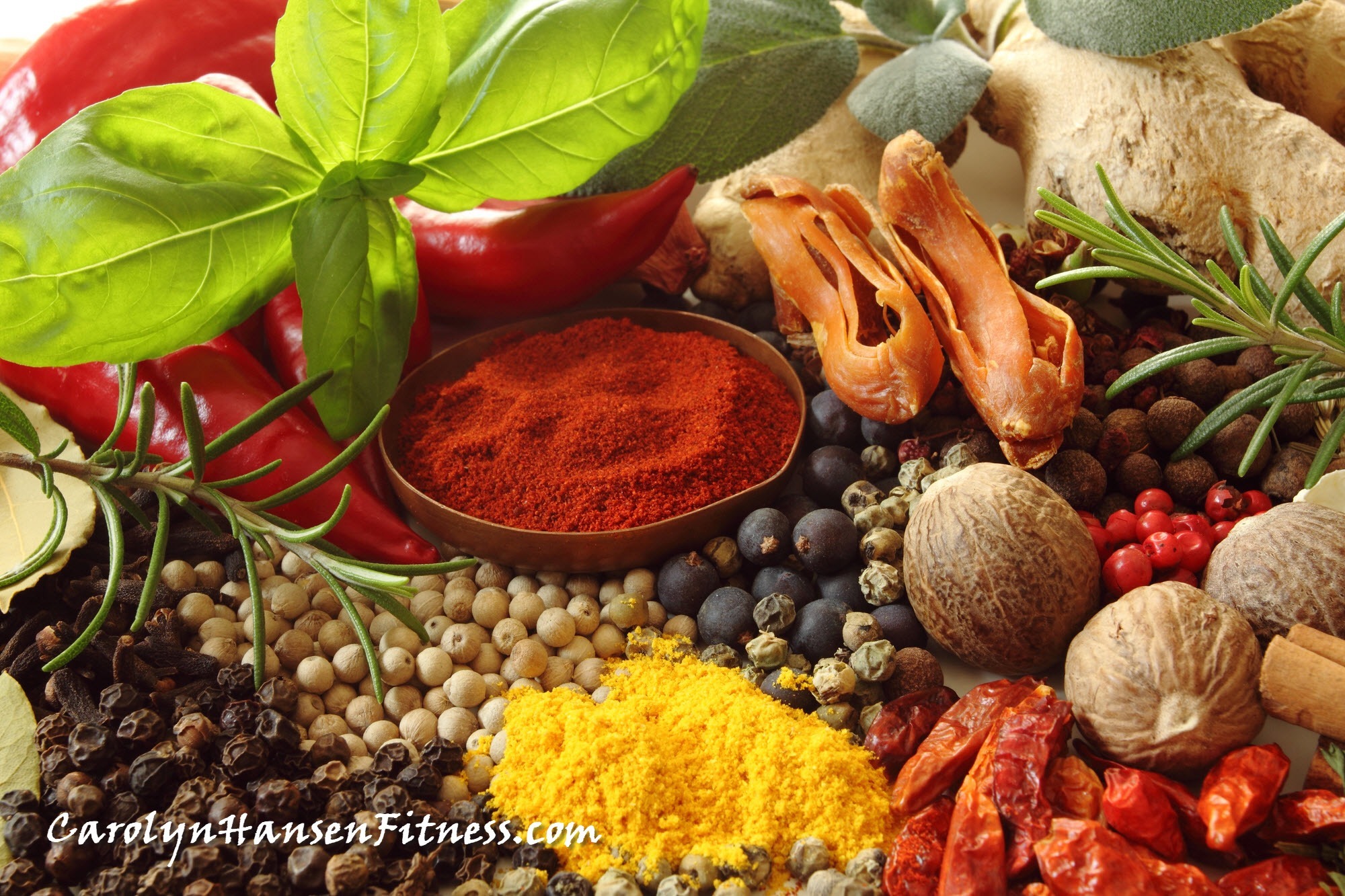
Herbs and spices and the perfect, healthy, tasty way to add oodles of flavor to food without adding those menacing extra calories.
Not only do herbs and spices add an abundance of flavor to foods, they contain powerful antioxidants that offer an array of health benefits from reducing inflammation to protecting against chronic diseases such as diabetes, cancer and heart disease.
These flavor enhancers have been used for trade and food flavoring as well as a way to boost health as long back as 1000 B.C.
HERBS
Herbs are the fragrant leaves or flowering parts of low growing shrubs that are grown in more temperate type climates. They can be found and used in both dried and fresh form. Parsley, chives, marjoram, dill, oregano, rosemary and sage are all herbs.
Fresh herbs are not as strong as dried herbs so you can up the amount when using fresh. A general guideline is to use 3 times as much fresh as you would dried herb.
Dried herbs stored for up to one year can still retain peak flavor. Purchase fresh herbs as close to the time as possible that they will be used. Having an herb garden of your own is the ideal way for picking the freshest herbs. Select them in the morning after the dew has dried but before the sun is hot.
Your own herb garden will not only provide healthy, fresh, toxic free herbs to flavor your foods with, gardening itself will provide a sense of well-being to your soul and a deep connection to Mother Earth.
After picking your herbs or bringing them home from the grocery store, store them in the refrigerator in an open or perforated plastic bag. They will keep at peak for a few days.
When you’re ready to use them, wash the thoroughly under running water. Shake off and dab excess moisture. A salad spinner is the perfect appliance for this.
Both crumbled and ground herbs release their flavors quickly and therefore can withstand longer cooking ties. Delicate herbs such as basil should be added to cooked foods a minute or two before the dish is finished cooking.
The best thing about cooking with herbs is variety. There is an almost endless variety of herbs, so, don’t be afraid to be creative. Experiment using different combinations of both herbs and spices.
Examples of popular herbs to help you get started:
Rosemary: fish, chicken, sauces, stuffing, potatoes, peas
Nutmeg: potatoes, fish, chicken, broccoli, cabbage and cauliflower
Dill: chicken, fish, potatoes, veggies, salads and pasta dishes
Basil: lamb, fish, soups and sauces, salads
Garlic: fish, turkey, soups, salads, veggies, pasta dishes and other lean meats
Mint: bugler, beans, salads, potatoes
Curry: chicken, fish, other meats, tomatoes, sauces and rice
SPICES
Spices on the other hand, come from the bark, buds, fruit, roots and seeds or stems of both trees and plants that grow in tropical areas. They range in color from black to red. A variety of plant parts are used for spices. For example, cinnamon is a bark while ginger is a root. Mustard is a seed and cloves are buds. Even a fruit and berry can be a spice. You will usually find them dried.
There are even plants that bear both and herb as well as a spice. Coriandrum sativum is an example. It bears the herb cilantro as its leaves while providing coriander as a seed.
There are even spices that can be used to replace the sugar component in foods and beverages. Allspice and anise, cinnamon and cloves as well as ginger all work well in that regard.
Herbs and spices are God’s gift to what would otherwise be boring, same-old foods day after day. Take advantage of this gift and have fun while doing it! Experiment with flavors and spice up your life!
For exciting, mouth watering recipes that use herbs, spices and veggies as the starring or side role check out:
Your paleo friendly, mostly raw, no sugar, no bake, no gluten source for delicious dessert and treat recipes!
For more tools and resources from Carolyn Hansen to assist you in attaining your goals and achieving the success you desire in life, please visit:

